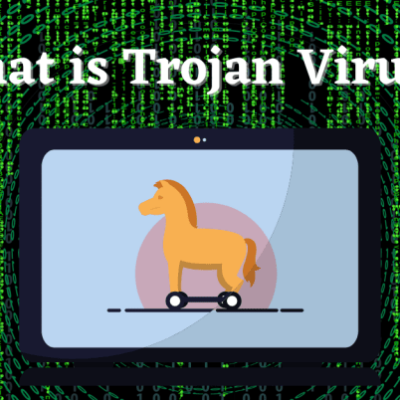The biggest surprise Microsoft has ever had with Windows 11 – in addition to Windows 11 itself – was that the OS would be able to run Android apps thanks to a partnership with Amazon. In one fell swoop, Microsoft dramatically improved the performance of the worse Microsoft Store. There are some decent apps in the Microsoft Store, but there are more Android apps to choose from.
And then – because no one released software these days – Microsoft announced that the Android feature would come at a later date.
Four months later and that much-anticipated update is finally here, albeit limited to US users at the time of publication. We have a guide for you to set up with Android apps, whether you want to stick to the official method or you want to take the risk of side-loading the apps.
How to Configure Android Apps on Windows 11
Fortunately, setting up Android compatibility is easy – if you’re just planning to try out officially approved apps, anyway. First of all, let’s make sure your system is compatible. You will need at least:
- 8 GB RAM (16 GB is recommended).
- At least one Intel Core i3 8th Gen, AMD Ryzen 3000, or Qualcomm Snapdragon 8c CPU.
- 720p (1280 x 720) display.
- An SSD Android apps aren’t compatible with old school hard drives for some reason.
- Windows 11 build is 22000.426 or higher.
- The latest version of the Microsoft Store.
If your hardware is compatible – most PCs that can run Windows 11 should be fine – then it’s just a matter of running Windows Update to make sure you’re on the latest build of OS and Microsoft Store.
Once this is done, simply go to the Microsoft Store, search for ‘Amazon Appstore Preview’ and install the software. It will also install the Windows Subsystem for Android (WSA), a behind-the-scenes engine (powered by Intel Bridge technology) that allows all kinds of Android apps to run relatively smoothly on Windows 11.

Then just search for the Amazon App Store. (It’s not typing, it’s just Amazon’s spelling) In your Start menu, open the app, and login (or create) with your Amazon account. You will see a selection of apps to choose from. The Amazon App Store currently only offers 1,000 apps and games – most of which are basic – but more are being added all the time.
How do Android apps compare to Windows apps?
Apart from a different aesthetic, Android apps behave like any regular Windows app. They will appear in your Start menu, and can be pinned there or in your taskbar. You can usually use your mouse, keyboard, and / or touch input to interact with apps. They can also be resized at your own pace, although you should keep in mind that many Android apps are not suitable for use in landscape mode.
The main difference you will notice is that when you open the Android app, you will first have to wait for the Windows subsystem to load for Android, which can be a bit slow.
If you expect Android apps to run frequently, you can go to the Windows subsystem for Android settings from the Start menu, and under the ‘Subsystem Resources’ dubbed section, select the ‘Continuous’ option.

This will keep WSA running in the background so that your apps load quickly. This could potentially affect performance on your computer, but I personally haven’t seen any issues yet.
You can also use the settings menu to view files associated with or downloaded Android apps, choose which GPU you want to make Power Graphics, and enable developer mode – if you want apps Is required if you intend to side-load (more on that below).
What about installing apps that aren’t on the Amazon App Store?
Unfortunately, most officially approved apps aren’t overly enthusiastic, and as Google apparently wasn’t involved in creating this new feature, you won’t find anything that relies on Google services (Google currently Is working on its own way to fetch. Android games for Windows, but no word on other types of apps).
While we recommend that most people stick to the official way of accessing Android apps, WSA means you can run all kinds of apps on Windows 11. You’ll need to use some elbow grease, and anything that requires Google services won’t work as well. Solution But many people have successfully sidelined many unapproved Android apps on Windows.
Needless to say, you have to be very careful when loading apps side by side. There is a good chance that the app you are trying to side-load will either work poorly or not work at all.
Aside from this quitting route, there are many ways you can go about side-loading Android apps, but I’m going to focus on the easiest way I know.
First things first, make sure you enter the WSA settings

Once this is done, install WSATools from the Microsoft Store. This app does two things. First, it installs the Android Debug Bridge (part of Google’s official developer toolkit), which is required for side-loading apps.

Note that some users have reported difficulty installing ADB from WSATools, in which case you can download it manually from Google. You can then point to WSATools from where you extract the “Platform Tools” folder from Google.
Second, it allows you to install Android apps (.apk files) with one click – no need to mess with the command line. You can find APKs for thousands of apps on sites like APKMirror and APKPure.
Once ADB is set up, simply point the WSA Tools to your APK file, and it should be installed immediately.
If for any reason you are unable to install WSATools APK, you can try a similar app from Windows Store. Or, if you’re comfortable with the command prompt, you can do it simply – XDA has an excellent guide on side-loading apps via ADB.
Hopefully side-loading won’t be necessary for long, as more developers will be putting their Android apps in the Amazon Appstore in the coming months while this feature is open to the public. But in the meantime, this guide should help you get started.









